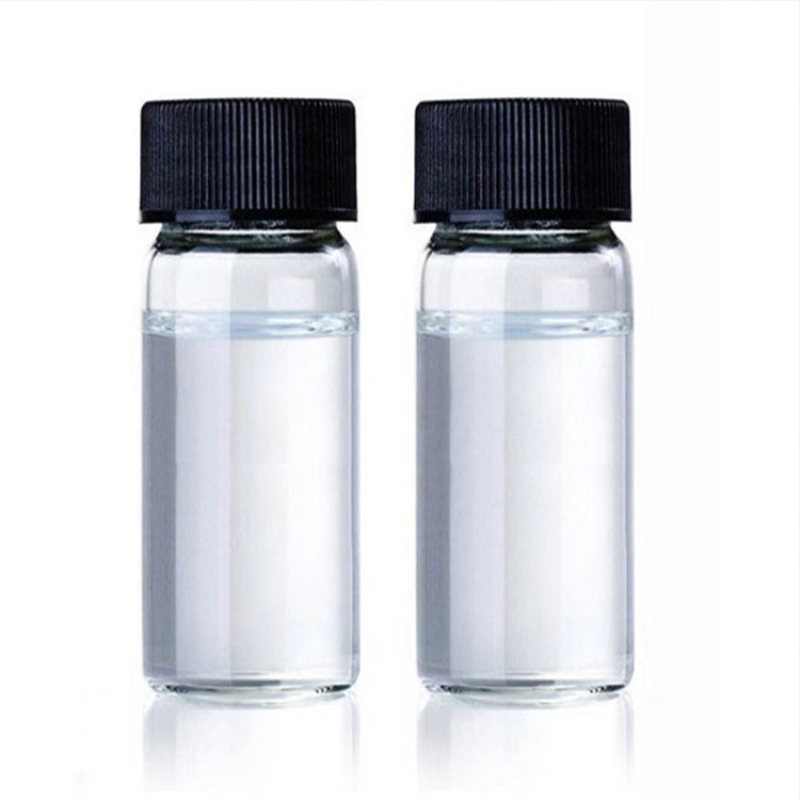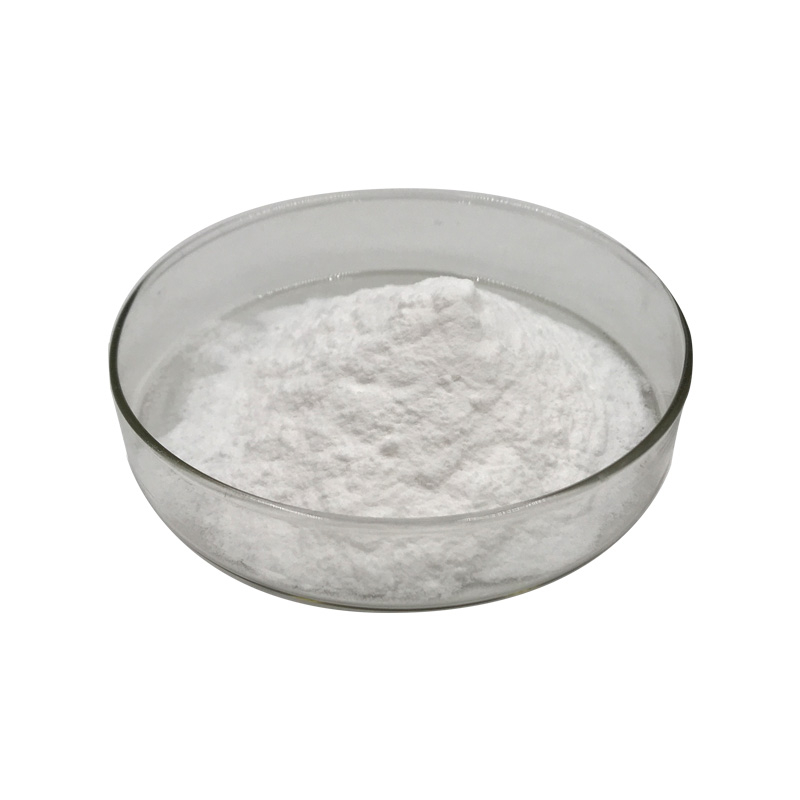Products Description of Saccharin CAS#81-07-2Pure saccharin is a non-toxic, non-caloric, non-nutritious sweetener that is not absorbed by the human body. Taking advantage of its sweet taste, it is used as a food additive to replace sugar. As a food additive, saccharin has no nutritional value to the human body except that it causes a sweet feeling in the taste buds and the sweetness of the taste can meet the requirements of consumers.
Contact Now
Products Description of BISMUTH SULFIDECAS#1345-07-9Bismuth sulfide is brown-yellow powder or crystal, with a specific gravity of 7.39. It decomposes at 685℃. It is insoluble in water and ethyl acetate, but soluble in nitric acid and hydrochloric acid.BISMUTH SULFIDE Chemical PropertiesMelting point 685°C (dec.)density 7.7 g/mL at 25 °C(lit.)solubility insoluble in H2O; soluble in acid solutionsform LumpSpecific Gravity7.7color GrayWater Solubility Insoluble in water.
Contact Now
Products Description of 2-Methylpiperazine CAS#109-07-9Colorless crystals, hygroscopic, with a typical amine odor, easily soluble in water and acetone.2-Methylpiperazine Chemical PropertiesMelting point 61-63 °C (lit.)Boiling point 155 °C/763 mmHg (lit.)density 0.817 g/cmrefractive index 1.4378 (estimate)Fp 149 °Fstorage temp. Keep in dark place,Inert atmosphere,Room temperaturesolubility 435g/lpkapK1:5.62(+2);pK2:9.60(+1) (25°C)form Crystalline Powder, Crystals and/or Chunkscolor White to yellowPH11-12 (50g/l, H2O)Water Solubility 78
Contact Now
Products Description of 2-Methylpiperazine CAS#109-07-92-Methylpiperazine is a chemical substance with the molecular formula C5H12N2.
Contact Now
Products Description of Triethylene glycol dimethacrylate CAS#109-16-0Unsaturated polyester resin (UPR) is one of the three most widely used matrix resin materials in resin-based composite materials.
Contact Now
Products Description of Bis(2-ethylhexyl) phosphate CAS#298-07-7 Di(2-ethylhexyl) phosphate is a chemical substance. It is a viscous oily liquid with strong acidity.
Contact Now
Products Description of 1-Methylpiperazine CAS#109-01-3Colorless liquid. Boiling point 138℃ (140℃), relative density 0.903 (20/4℃), refractive index 1.4378, flash point 42℃, soluble in water, ether, ethanol, miscible with water, methanol, etc.
Contact Now
2-Bromo-6-methoxypyridine Chemical PropertiesBoiling point 206 °C (lit.)density 1.53 g/mL at 25 °C (lit.)refractive index n20/D 1.559(lit.)Fp 220 °Fstorage temp. Inert atmosphere,Room Temperaturepka-1.04±0.10(Predicted)form Liquidcolor Clear colorless to goldenInChIInChI=1S/C6H6BrNO/c1-9-6-4-2-3-5(7)8-6/h2-4H,1H3InChIKeyKMODISUYWZPVGV-UHFFFAOYSA-NSMILESC1(Br)=NC(OC)=CC=C1CAS DataBase Reference40473-07-2(CAS DataBase Reference)Safety InformationHazard Codes Xi,T,XnRisk Statements 36/37/38-20/21/22Safety Statements 26-36WGK Germany
Contact Now
Products Description of Octanoic acid CAS#124-07-2Caprylic acid is a medium-chain fatty acid. It has 8 carbons in its chain, so it is also called n-caprylic acid. Caprylic acid is considered an essential fatty acid, which is necessary for the proper functioning of the human body.
Contact Now
Products Description of Boron Trifluoride Diethyl Etherate CAS#109-63-7Boron trifluoride is an important Lewis acid catalyst in organic synthesis and plays an important role in organic reactions (such as polymerization, hydrocarbonization, alkylation, isomerization, etc.). It is inconvenient to use trifluoride when it is in gaseous state. In order to adapt to the activity requirements of different reactions, according to the characteristics of trifluoride, it is often combined with polar oxygen- or nitrogen-containing compounds to convert it into a complex with strong stability.
Contact Now
Products Description of 4-Methylmorpholine CAS#109-02-4N-methylmorpholine is an important organic chemical intermediate. It is an excellent solvent, emulsifier, corrosion inhibitor, polyurethane foam catalyst, and can also be used as a pesticide intermediate.
Contact Now
Products Description of 3-Dimethylaminopropylamine 99.5% CAS#109-55-7Colorless and transparent liquid, soluble in water and organic solvents. Relative density 0.8100. Boiling point 133℃. Freezing point - 70°C. Below this temperature it solidifies into glass. Flash point (closed cup) 15℃. Refractive index 1. 4350.
Contact Now
Products Description of Ethyl vinyl ether CAS#109-92-2Colorless flammable liquid with active chemical reaction performance. It is easy to polymerize in liquid or gas phase. Industrial products contain inhibitors to prevent polymerization. Freezing point -115℃, boiling point 35-36℃, melting point -115.8℃, relative density 0.754 (20/20℃), refractive index 1.3767, flash point -45.5℃, autoignition point 201.66℃, viscosity (20℃) 0.22mPa·s. Slightly soluble in water, only 0.9% (by weight).
Contact Now
Products Description of Dimethyl-Amino Propyl-Amine CAS#109-55-7N,N-dimethyl-1,3-diaminopropane is an organic compound with the molecular formula C₅H₁₄N₂3-Dimethylaminopropylamine Chemical PropertiesMelting point -60 °CBoiling point 133 °C(lit.)density 0.812 g/mL at 25 °C(lit.)vapor density 3.6 (vs air)vapor pressure 5 mm Hg ( 20 °C)refractive index n20/D 1.435(lit.)Fp 90 °Fstorage temp. Store below +30°C.form Liquidpka10.13±0.10(Predicted)color ClearOdorammoniacal odorPH12.7 (100g/l, H2O, 20℃)explosive limit2
Contact Now
Dimethoxymethane CAS#109-87-5Chemical Properties:Dimethoxymethane, also called methylal, is a colorless flammable liquid with a low boiling point, low viscosity and excellent dissolving power. It is stable in the presence of alkalis and mild acids, and to high temperatures and pressures. It differs from other ethers in that it forms only minute omounts of peroxides. It will dissolve such synthetic resins as nitrocellulose, cellulose acetate and propionate, ethyl cellulose, vinyl, "Epons" and polystyrene, and also many of the natural gums and waxes.
Contact Now
Propyl acetate CAS# 109-60-4Chemical Properties:Propyl acetate, also known as propyl acetate, n-propyl acetate, or n-propyl acetate, is a colorless and clear liquid with a soft fruity aroma. Naturally found in strawberries, bananas, and tomatoes. Soluble in most organic solvents such as alcohols, ketones, esters, and oils, and slightly soluble in water.Quality Assurance:We maintain strict quality control to ensure our glacial acetic acid meets the highest purity standards, essential for critical industrial applications.Professional Sales Pitch:As a sales professional, I understand th
Contact Now
Products Description of Pyrazine CAS#290-37-9Pyrazine is a chemical.CAS No. is 290-37-9.Pyrazine Chemical PropertiesMelting point 50-56 °C (lit.)Boiling point 115-116 °C (lit.)density 1.031 g/mL at 25 °C (lit.)refractive index 1.5235FEMA 4015 | PYRAZINEFp 132 °Fstorage temp. Store below +30°C.solubility SOLUBLEpka0.65(at 27℃)form Crystalscolor WhiteSpecific Gravity1.031Odorat 0.10 % in propylene glycol.
Contact Now
Products Description of Stannous methanesulfonateCAS#53408-94-9Colorless transparent liquid with the smell of rotten eggs.Stannous methanesulfonate Chemical PropertiesMelting point -27°Cdensity 1.55refractive index 1.444Specific Gravity1.550Water Solubility Not miscible or difficult to mix in water.Sensitive Air SensitiveHydrolytic Sensitivity0: forms stable aqueous solutionsExposure limitsACGIH: TWA 0.1 mg/m3; STEL 0.2 mg/m3 (Skin)NIOSH: IDLH 25 mg/m3; TWA 0.1 mg/m3InChIKeyJALQQBGHJJURDQ-UHFFFAOYSA-LCAS DataBase Reference53408-94-9(CAS DataBase Reference)EPA Subs
Contact Now
Products Description of Casein CAS#9000-71-9 Casein is the main protein in the milk of mammals, including cows, sheep and humans. The protein in milk is mainly casein, while human milk is mainly albumin. Casein is a large, hard, dense, and extremely difficult to digest and decompose curd.Casein is the highest content protein in milk. It is currently mainly used as a food raw material or microbial culture medium.
Contact Now
Products Description of Dipentaerythritol hexaacrylate CAS#29570-58-9White powderDipentaerythritol hexaacrylate Chemical PropertiesBoiling point 640.7±55.0 °C(Predicted)density 1.184±0.06 g/cm3(Predicted)Fp 266 °Cstorage temp. Sealed in dry,Room Temperatureform Liquidcolor Colorless to Light yellow to Light orange clear liquidEPA Substance Registry SystemDipentaerythritol hexaacrylate (29570-58-9)Factory and Equipment ShowFast delivery timeInventory 2-3 working days New production 7-10 working days
Contact Now
Products Description of (Z)-N-9-octadecenylpropane-1,3-diamineCAS#7173-62-8Colorless liquid(Z)-N-9-octadecenylpropane-1,3-diamine Chemical PropertiesBoiling point 435.6±28.0 °C(Predicted)density 0.851±0.06 g/cm3(Predicted)vapor pressure 0.002Pa at 20℃pka10.67±0.19(Predicted)Water Solubility 36mg/L at 23℃LogP0EPA Substance Registry SystemN-Oleyl-1,3-propanediamine (7173-62-8)Factory and Equipment ShowFast delivery timeInventory 2-3 working days New production 7-10 working days
Contact Now
Products Description of Benzylamine CAS#100-46-9Benzylamine, also known as benzylamine, is an organic compound with the chemical formula C7H9N.
Contact Now
Products Description of Polyisobutylene CAS#9003-27-4Ammonium Chloride (CAS#12125-02-9) is a white crystalline salt that is highly soluble in water, with a solubility of 37.2 g/100 g at 20°C. It is a crucial component in agricultural fertilizers, providing essential nitrogen for plant growth. This compound is also used as a feed additive and in various industrial applications due to its versatility. In agriculture, Ammonium Chloride is valued for its ability to enhance soil fertility and promote robust plant development.
Contact Now
Products Description of CARBOMER CAS#9007-20-9 Polyacrylic acid, referred to as PAA, also known as 2-acrylic acid homopolymer, acrylic resin coating, acrylic resin, acrylic monomer polymer, acrylic modified resin, acrylic resin emulsion, is a water-soluble acrylic polymer, and is also soluble in certain polar solvents, such as methanol, dioxane and ethylene glycol. The ionization constant is 4.75. Since the molecule contains a large number of carboxyl groups, it can react with alkali, alcohol, and amine, and can also undergo dehydration, degradation and complexation reactions.
Contact Now



































